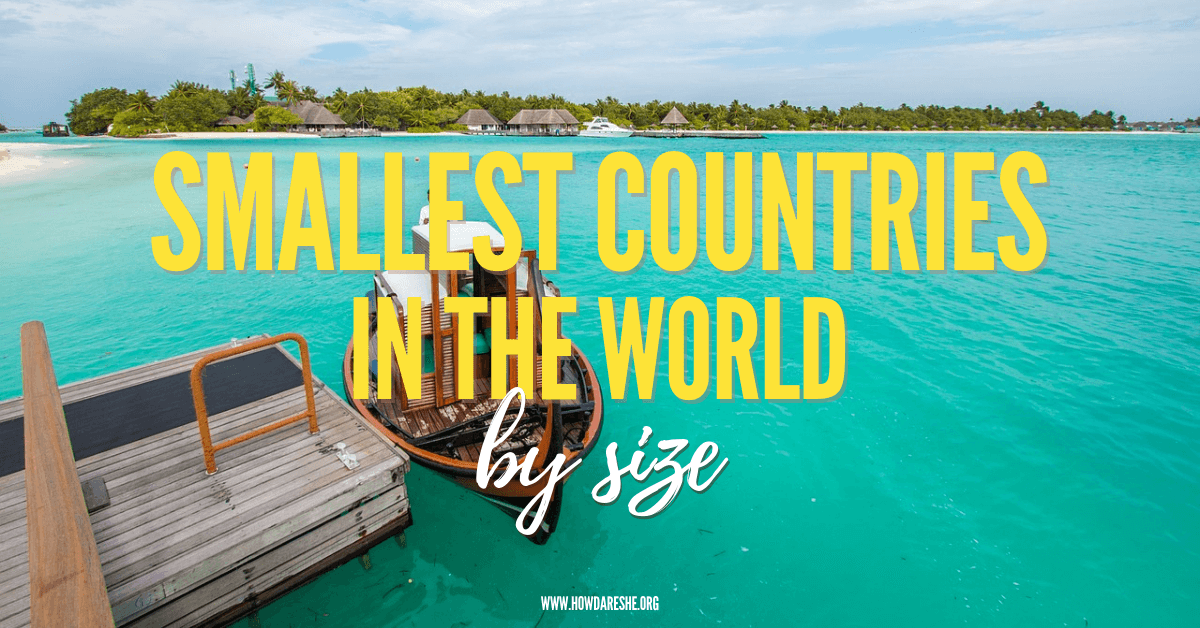Smallest country in the world Top Ten Amazing into Travel

The smallest country in the world
The world’s greatest nations stand out enough to be noticed, no doubt, regardless of whether it’s the official political decision in the United States, exchange with China, governmental issues in Russia, or the destiny of the Amazon rainforest in Brazil. But the nations with the smallest country in the world have legitimate issues of their own.
Lebanon
– Populace: 5,469,612 (- 6.7% normal populace development)
– Net movement rate per 1,000 individuals: – 88.7%
– Metropolitan populace: 88.9% of complete populace (+0.8% yearly pace of progress)
– Rate of birth per 1,000 individuals: 13.6 (middle future upon entering the world: 78.3 years)
– Passing rate per 1,000 individuals: 5.4
– Middle age: 33.7
Populace development has been lopsided in Lebanon in the course of recent many years, and it has seen critical floods of movement, especially during the 15-year common conflict, which started in 1975, and its consequence. The nation likewise is home to upwards of an expected 1 million Syrian exiles. Lebanon was amidst the most exceedingly awful financial emergency in its set of experiences before the pandemic, and presently organizations have shut, in excess of 33% of the populace is jobless, and almost half are living underneath the destitution line.
Norway
– Populace: 5,467,439 (+0.9% normal populace development)
– Net relocation rate per 1,000 individuals: +4%
– Metropolitan populace: 83% of absolute populace (+1.4% yearly pace of progress)
– Rate of birth per 1,000 individuals: 12.2 (middle future upon entering the world: 82.1 years)
– Demise rate per 1,000 individuals: 8.1
– Middle age: 39.5
Populace development in Norway is steady. Its introduction to the world rate is somewhat low, yet that is counterbalanced by the quantity of workers streaming into the smallest country in the world. At its present rate, Norway is developing by around 50,000 individuals yearly.
Slovakia
– Populace: 5,440,602 (- 0.1% normal populace development)
– Net relocation rate per 1,000 individuals: +0.2%
– Metropolitan populace: 53.8% of all out populace (0% yearly pace of progress)
– Rate of birth per 1,000 individuals: 9.3 (middle future upon entering the world: 77.8 years)
– Passing rate per 1,000 individuals: 10.1
– Middle age: 41.8
Populace development has been delayed since Slovakia’s freedom in 1992. It’s been one of the quickest developing economies in the European Union, albeit the advantages favor the flourishing Bratislava district. Neediness and joblessness are high in the Prešov area, where a large number of the Roma public reside.
Republic of the Congo
– Populace: 5,293,070 (+2.3% normal populace development)
– Net relocation rate per 1,000 individuals: – 0.9%
– Metropolitan populace: 67.8% of absolute populace (+3.3% yearly pace of progress)
– Rate of birth per 1,000 individuals: 32.6 (middle future upon entering the world: 61.3 years)
– Passing rate per 1,000 individuals: 8.7
– Middle age: 19.5
The Birth rate in the Republic of the Congo is incredibly high, pushing its populace to numbers that its economy can’t support. Endeavors have been made to further develop schooling and mindfulness about contraception and family arranging. The populace development is held under tight restraints to some degree by countless travelers leaving for monetary freedom somewhere else. The nation is one of the greatest oil makers in sub-Saharan Africa, however close to a large portion of the populace lives in destitution.
Ireland
– Populace: 5,176,569 (+1% normal populace development)
– Net relocation rate per 1,000 individuals: +3.9%
– Metropolitan populace: 63.7% of all out populace (+1.1% yearly pace of progress)
– Rate of birth per 1,000 individuals: 13 (middle future upon entering the world: 81.2 years)
– Demise rate per 1,000 individuals: 6.8
– Middle age: 37.8
During the 1840s, before the Potato Famine, some 6.5 million individuals lived in Ireland, a lot more than today. Its present populace is developing at a moderate and consistent rate, helped by a progression of migrants. A review in 2015 observed that almost one out of eight individuals in Ireland had been conceived somewhere else.
Costa Rica
– Populace: 5,097,988 (+1.1% normal populace development)
– Net relocation rate per 1,000 individuals: +0.8%
– Metropolitan populace: 80.8% of absolute populace (+1.5% yearly pace of progress)
– Rate of birth per 1,000 individuals: 14.8 (middle future upon entering the world: 79.2 years)
– Demise rate per 1,000 individuals: 4.9
– Middle age: 32.6
Costa Rica’s populace development is without rushing. The rate is relied upon to proceed to slow and afterward decrease in around 30 years in the steady, prosperous Central American smallest country in the world, where the economy depends intensely on eco-the travel industry.
Liberia
– Populace: 5,073,296 (+2.7% normal populace development)
– Net movement rate per 1,000 individuals: – 2.9%
– Metropolitan populace: 52.1% of absolute populace (+3.4% yearly pace of progress)
– Rate of birth per 1,000 individuals: 37.3 (middle future upon entering the world: 64.7 years)
– Demise rate per 1,000 individuals: 7
– Middle age: 18
In ruined Liberia, an amazingly high rate of birth has filled its quick populace development, even in the midst of a high relocation rate. Crusades are in progress to expand familiarity with contraception and family arranging. The development rate is seen declining before very long.
New Zealand
– Populace: 4,925,477 (+1.4% normal populace development)
– Net relocation rate per 1,000 individuals: +8%
– Metropolitan populace: 86.7% of all out populace (+1% yearly pace of progress)
– Rate of birth per 1,000 individuals: 12.8 (middle future upon entering the world: 82.1 years)
– Passing rate per 1,000 individuals: 6.9
– Middle age: 37.2
New Zealand’s populace has developed gradually yet sped up as of late because of a significant expansion in migration. Between enumeration taking in 2013 and 2018, it added 270,000 traveler occupants, numerous from China, India, and the Philippines. The development is seen stressing administrations and compelling the climate.
Oman
– Populace: 4,664,844 (+2% normal populace development)
– Net movement rate per 1,000 individuals: – 0.4%
– Metropolitan populace: 86.3% of absolute populace (+5.3% yearly pace of progress)
– Rate of birth per 1,000 individuals: 23.1 (middle future upon entering the world: 76.3 years)
– Passing rate per 1,000 individuals: 3.3
– Middle age: 26.2
The populace has filled quickly in Oman, to some degree because of more births and less passings as its medical services framework has improved. It likewise has had an enormous deluge of migrant specialists, commonly from India and Bangladesh, utilized in the smallest country in the world monster framework development projects. As the tasks are finished, the populace development is probably going to decrease.
Croatia
– Populace: 4,227,746 (- 0.5% normal populace development)
– Net movement rate per 1,000 individuals: – 1%
– Metropolitan populace: 57.6% of complete populace (- 0.1% yearly pace of progress)
– Rate of birth per 1,000 individuals: 8.7 (middle future upon entering the world: 76.7 years)
– Demise rate per 1,000 individuals: 12.8
– Middle age: 43.9
Croatia’s populace has been declining for quite a long time. Its introduction to the world rate is low, its populace is matured, and its displacement rate is high. Of individuals who have left, a significant number of them youthful and of working age, most have gone to Germany. Croatia’s populace misfortune has appeared in a lack of work in development and its occasional the travel industry. The United Nations has anticipated its populace will tumble to under 3.5 million individuals by 2050.





